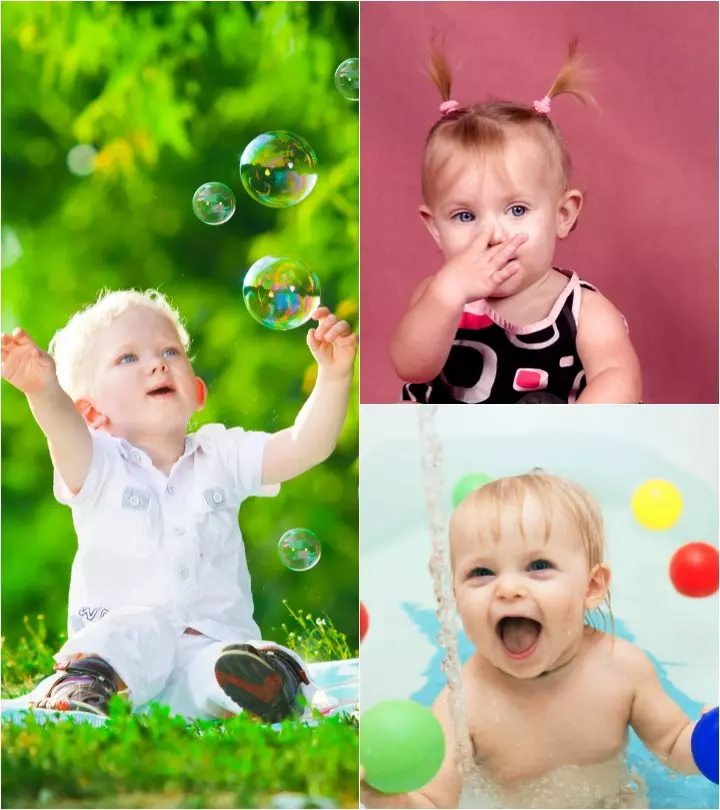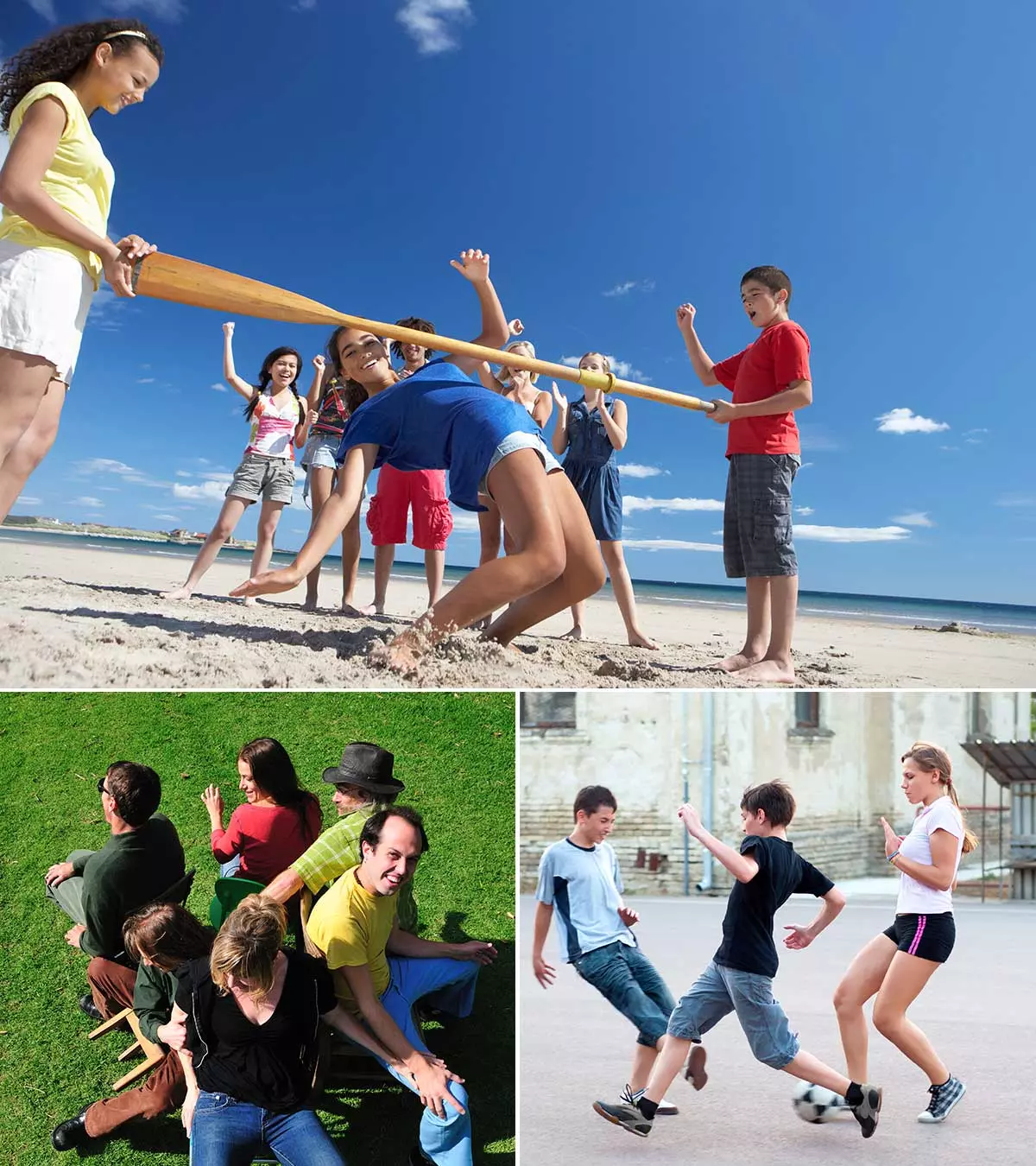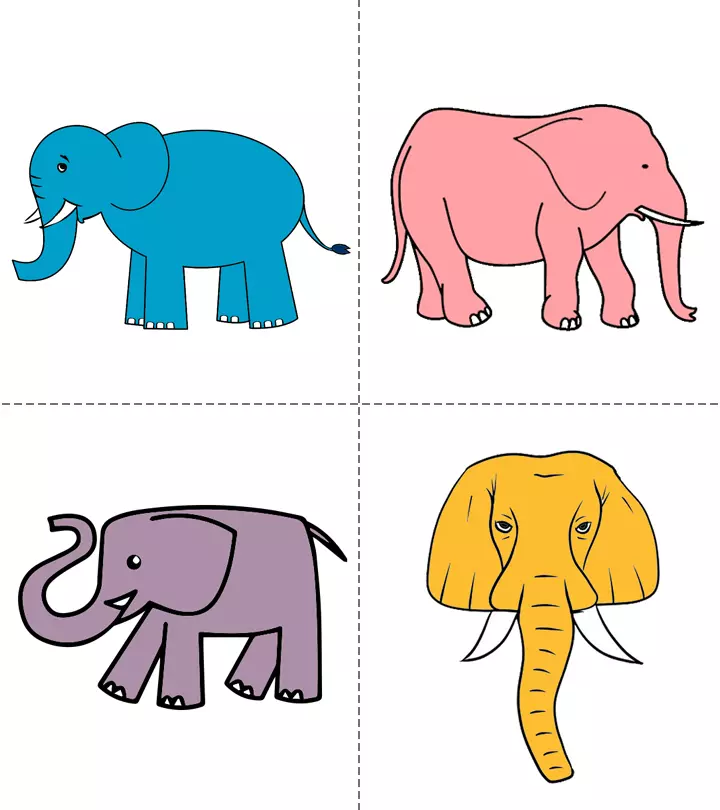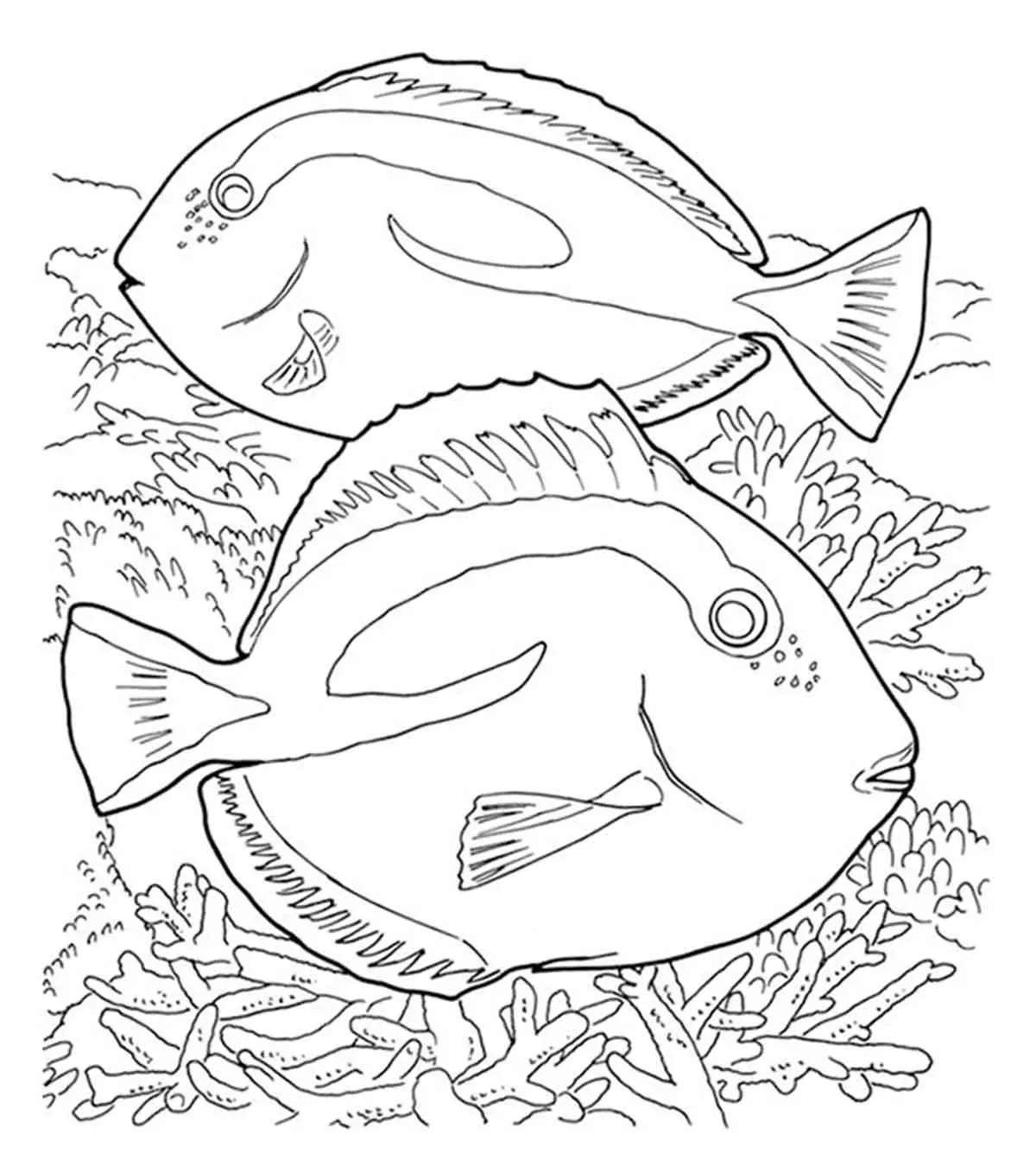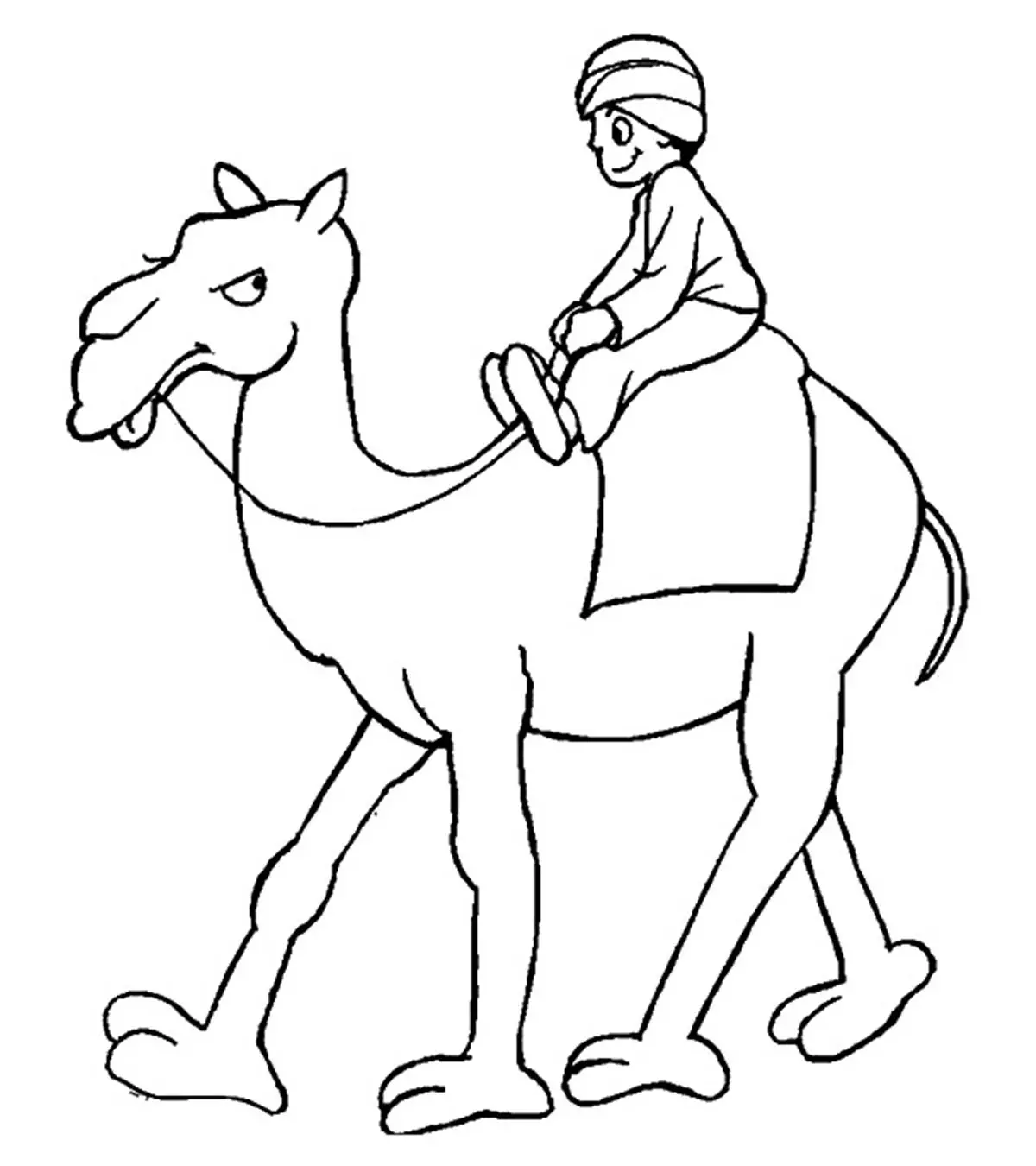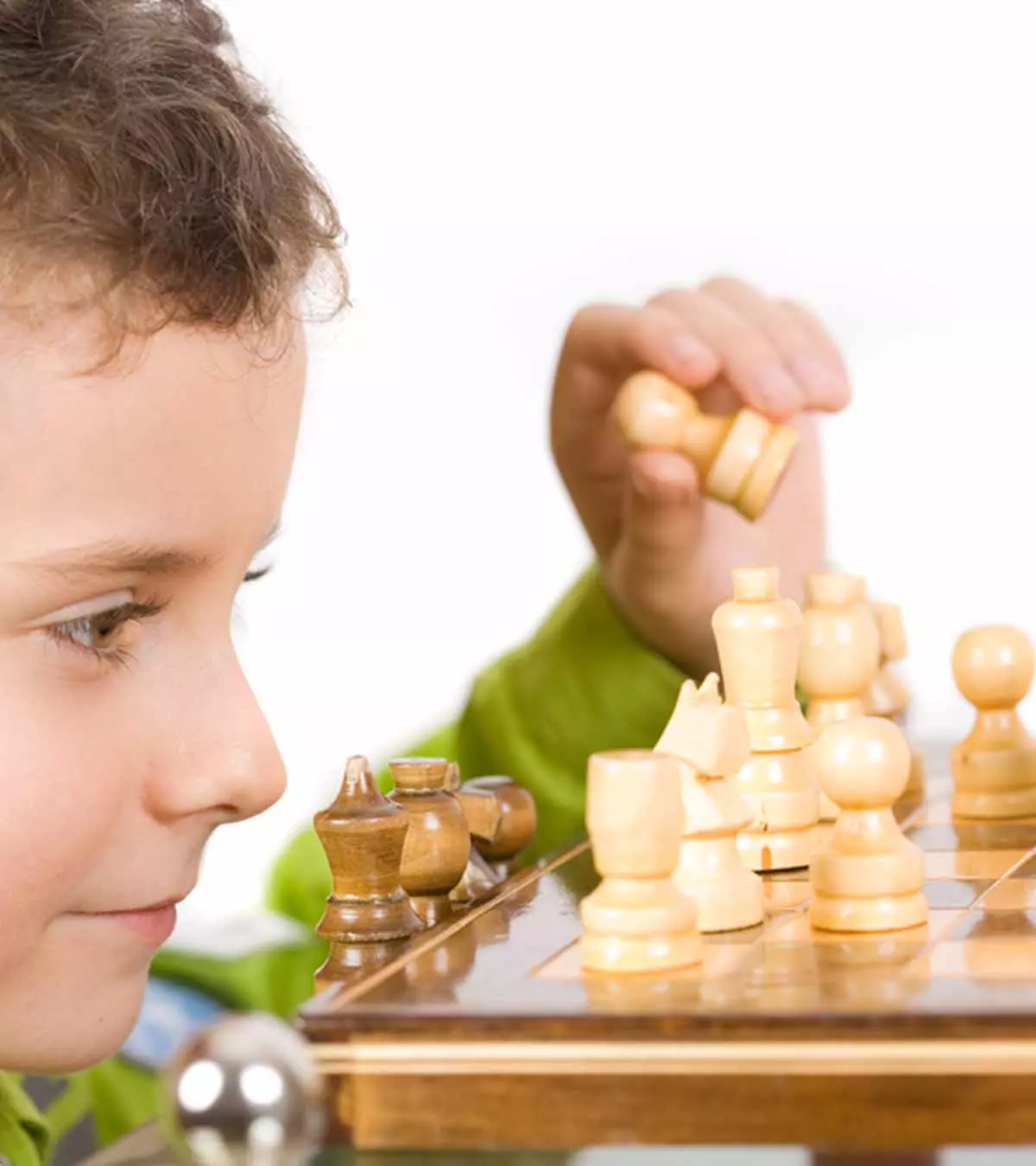
Image: Shutterstock
Many parents look for activities for eight-year-olds since the children may not show interest in the activities they liked before. Usually, most children begin to show independence, understand their place globally, and pay attention to friends and teamwork around the age of eight (1). You may upgrade their activities and games to match their developing mental skills. Keeping them engaged in age-appropriate activities can be beneficial for cognitive developmentiDevelopment of a child’s intellectual abilities, including information processing, problem-solving, and decision-making . Read on to know an array of activities that help in the overall development of your eight-year-old.
Key Pointers
- Eight-year-old educational games and activities should improve their developmental skills, such as creativity and independence.
- Decoding the message or math games help enhance their analytical and language skills.
- Boards games offer fun family time while encouraging the child’s logical thinking ability.
30 Games And Activities For Eight-Year-Olds
Finding appropriate games and activities for eight-year-olds can be both exciting and challenging. Since kids are full of energy and curiosity at this age, it’s important to introduce activities that nurture their creativity, social skills, and problem-solving skills. Whether your children enjoy outdoor activities, brain-stimulating games, or hands-on arts and crafts, the right combination of fun and learning can help them develop essential life skills. So, explore the games and activities below that cater to different interests, ensuring meaningful play for hours.
Educational And Learning Activities
Educational and learning activities make learning enjoyable and develop the abilities to deal with failure, build resilience, and support creativity (2).
1. Letter talk
Word games for kids help boost your child’s vocabulary. Researcher Nadine Gaab, associate professor of Education at the Harvard Graduate School of Education, says, “For young children, it’s good to engage them with letters and letter combinations, or anything that’s related to reading, the earlier the better (11).” Letter talk is one such fun-filled activity that hones their spelling and reading skills.
- Write a word on the whiteboard and ask your child to write another word that starts with the word’s last letter.
- Suppose you write “EXAMINATION,” your child has to write a word with the letter “N.”
- Take turns to write new words as long as you want to play. Explain and discuss the meaning of each word.
- Make the activity time-bound to add an element of fun and challenge.
2. Draw idioms
Idioms are phrases with a fixed combination of words that have a non-literal meaning (3). A few examples are, ‘better late than never,’ ‘a blessing in disguise,’ ‘get out of hand,’ and ‘no pain, no gain.’ Use idioms in sentences when you speak to your child. Ask them to draw the literal and non-literal meaning of the idiom to make learning fun. Learning idioms can help an eight-year-old understand a language better.
 Quick tip
Quick tip3. Captions and more
The activity promotes creative thinking and strengthens composition skills. You will need some old photographs, colored pens, and a scrapbook. Ask your child to create photo memorabilia and caption each photograph in a way that best describes their memory associated with that picture. Encourage the child to write creative captions while cherishing the memories together.
4. Weather wall
Help your child learn the weather icons/symbols with this activity. You can use a whiteboard and markers or a chart paper and colored pens.
- Make illustrations of weather icons that represent different weather types, like sunny, rainy, cloudy, windy, etc.
- Ask your eight-year-old to identify the day’s weather, either visually or through a weather app, and write the date under the corresponding icon.
- You can also say the names of the icons, such as sunny or rainy, and the child points out the icon for that weather.
5. Decode the message
Certain brain games for kids help them develop their reading and comprehension skills from a young age. For this game, scramble the sentences in a short passage by changing the order of the words, and give it to your child to unscramble. Once the child unscrambles the sentence, ask them to write the sentence in their own words within the stipulated time. Unscrambling the sentences and rewriting them hone their analytical and language skills. When doing this, bear in mind the child’s developmental stage and set sentences that you are sure the child will be able to unscramble.
 Point to consider
Point to consider6. Identify the country or location
Place a world map on a table and a list of countries. The child needs to mark the countries on the map with a marker or place a pin on it. You can up the challenge by giving the list of cities to mark. This activity will help improve the child’s geography skills and widen their knowledge about different countries or cities in the world.
7. Math riddle
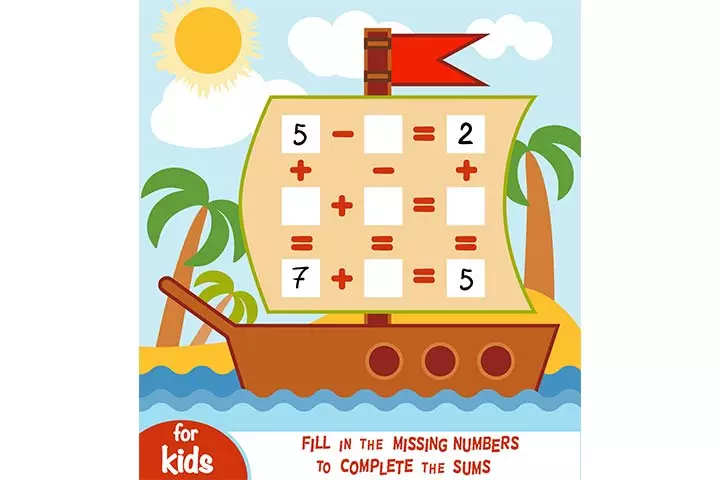
It is important to introduce math to children from an early age through games and riddles to develop their skills for later academic success (12). Math riddle is a brain teaser activity that hones your child’s critical thinking, logical thinking, and deductive reasoningiA thinking methodology starting from general principles and reaching specific conclusions skills. Math riddles for kids in books or online activity sheets can be used to practice age-appropriate math riddles. Make the riddle-solving session enjoyable by motivating your child to prepare riddles for friends and family. Again, bear in mind the child’s developmental stage.
8. Board games

Board games are a fun and engaging way to hone multiple cognitive abilities. They help children enhance their social skills, self-esteem, hand-eye coordination, fine motor skills, and problem-solving skills, and also improve word, number, and color recognition (13). A few interesting board games include Junior Scrabble, Trivial Pursuit Junior, Codenames, and Mastermind. Each game boosts some cognitive skill. For instance, while Junior Scrabble fine-tunes vocabulary and spelling skills, the Mastermind game encourages logical thinking and creativity.
9. Paragraph drawing
Make your child read a paragraph, preferably from a children’s story, and then illustrate the situation given in the paragraph, using colored pens. You can pick a paragraph based on your child’s drawing skills and preferred literary complexity. This activity promotes coordination between listening skills, cognitive abilities, and creativity. It can also promote self-expression and boost self-esteem.
Art And Craft Activities For Eight-Year-Olds
These recreational activities for 8-year-olds help children learn essential skills, like imagination, creativity, critical thinking, independence, fine motor skills, problem-solving skills, hand-eye coordination, social skills, self-regulation, and self-expression (14). Your child will also learn to be patient and calm while working on these projects.
10. Origami

Origami is an engaging paper-folding art. Get an age-appropriate origami kit for your child and let them indulge in some fun creations. Motivate them to prepare different items, like finger puppets, modular cube, butterfly, etc. Regular practice can also hone the child’s fine motor skills and promote mental concentration.
11. Cardboard creations

Upcycling waste material is about using it to create something new. It requires heaps of imagination and creativity. Motivate your child to upcycle cardboard boxes to create various items, such as storage box, pen stand, photo frame, or even toys. This activity can also sensitize the child on the importance of responsible waste management.
12. Beetle dice drawing
Label each part of the beetle’s body from one to six. For instance, mark one for the head (with eyes and antenna), two for the abdomen, and three for left legs, and so on. Ask your child to roll the dice, and draw the part of the beetle that corresponds to the dice’s number. Keep rolling the dice until the illustration is complete. You can increase the challenge by setting a time limit. Regular involvement in such activities helps hone your child’s time management and cognitive skills.
13. Candle making
You can buy candle-making kits available over-the-counter. Make sure the child performs this activity under adult supervision. You may utilize the created candles or use them as showpieces, as well.
14. Batik painting
Batik is a wax-resist dyeing technique used in paintings and dying fabric. You can purchase a Batik painting kit online to introduce this artistic painting technique to your eight-year-old. Let your child try different patterns and use plenty of colors. The activity can help promote creative self-expression necessary to attain self-confidence.
 Did you know?
Did you know?15. Hanging plate
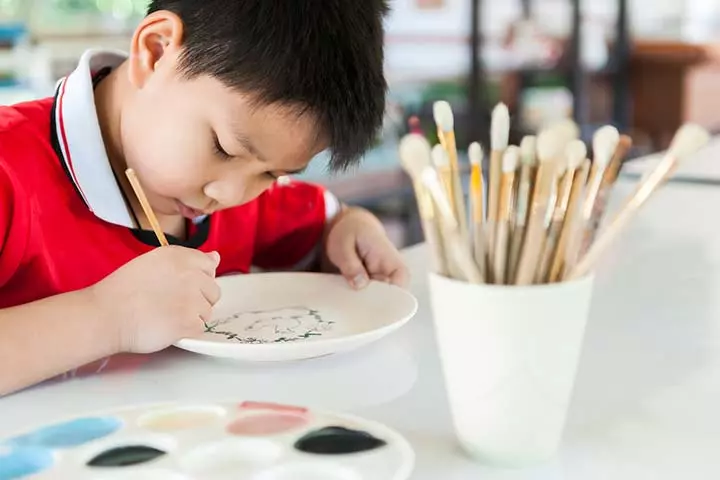
It is a simple recreational activity of converting an old, used plate into a decorative piece using acrylic paints. Involving your child in such activities boosts cognitive abilities and enhances self-expression. Besides, it is also a good way to introduce them to the concept of recycling and upcycling.
16. DIY mini garden
Gardening is one of the best educational activities for kids. You can create an indoor mini garden with an old plastic bathtub or a large flower pot and other decorative items. You will need soil and seeds that you can purchase from your local florist. Making a mini garden helps your child understand the basics of gardening and plant rearing. Gardening can also be relaxing since it provides the satisfaction of watching plants grow as the child nurtures them, so your child will experience improved moods and decreased anxiety. Moreover, this activity promotes learning, social skills, gross motor skills, and scientific curiosity (15).
 Did you know?
Did you know?Indoor And Outdoor Activities
Indulging in indoor and outdoor activities supports an eight-year-old child’s physical and psychosocialiA phenomenon relating to the interaction between an individual’s psychological and social factors development. Whether they’re exploring nature, playing active games, or diving into creative projects, the right activities can help them develop necessary skills while having fun.
17. Family tree
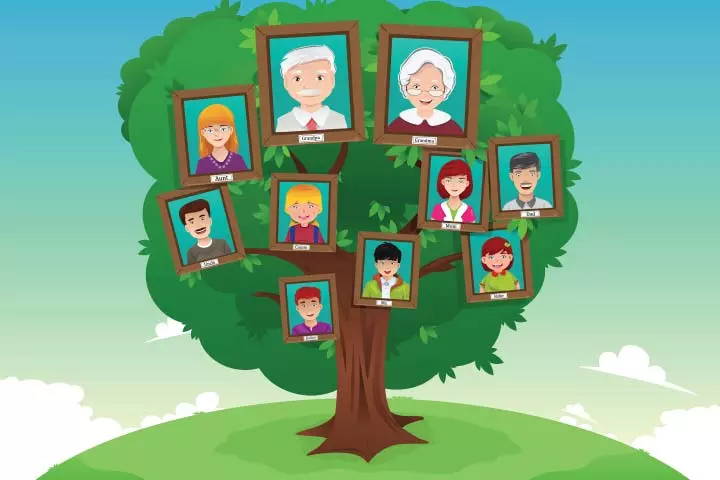
A family tree is a visual representation of family relationships in the form of a tree. Use a scrapbook, colored pens, old pictures from the family album, glue, and scissors to create a family tree. The child can caption each picture and write five lines about the family tree. Making a family tree enhances creativity and fine-tunes writing skills.
18. Culinary experiment
Children enjoy eating new food varieties. You can up the excitement by letting them cook their next favorite snack. The Academy of Nutrition and Dietetics states, “The best way to teach kids about eating right is to get them into the kitchen to prepare healthy meals together. Cooking is a valuable life skill that teaches children about nutrition and food safety, as well as building math, science, literacy and fine motor skills (16).” Introduce children to fireless cooking for kids with some simple recipes. Encourage them to experiment with the ingredients and try recipes from different cuisines. They can also maintain notes to replicate their recipe later.
Blogger Innichka Chef says, “My kiddos are always helping me with dinner prep or other food related projects. I’m one of those moms who doesn’t want to do everything for my kiddos until the age of 18. I think children should learn many life skills as early as possible. And of course learning how to cook is THE MOST IMPORTANT thing you can teach your little one as well as using real tools, Children enjoying hands on projects. You may find out that some kids have a different interest in the kitchen, but its ok, use a Montessori technique to find out what works for you the best (ii)”.
19. Pictionary
Research shows that Pictionary games enhance vocabulary, develop communications, and promote active thinking skills (4).
- Make two teams (team A and team B) with at least two participants in each team.
- Instruct team A to assign a word/phrase to one person from team B.
- The assignee has to draw image/s that can represent the word/phrase, and the other players of his/her team have to guess the word/phrase within the stipulated time.
- Use a sheet of paper or whiteboard and a marker to draw the picture. You can also use online Pictionary kits or online Pictionary games to play this game with friends and family.
20. Puzzles
Involving children in age-appropriate puzzles can promote motor skills, improve vocabulary, and enhance problem-solving abilities (5). Your child can try various types of puzzles such as cryptic puzzles, trivia puzzles, word puzzles, etc. Motivate them to participate in puzzle-solving sessions with friends and family to boost their collaboration skills.
21. Tape shape
Use an easy-to-remove tape to create various shapes, such as a square, circle, pentagon, etc., on the floor at a distance from one another. Take pieces of chart paper and write instructions, such as “run to the square,” “walk to the circle,” “hop five times to the pentagon,” etc., on each piece of paper. Place a piece of chart paper between the shapes. Your child will have to read the instructions, perform the task, and move from one shape to another within a stipulated time. The indoor activity promotes active thinking skills and physical development.
22. DIY obstacle course
The entertaining outdoor activity promotes physical development, muscular strength, cardiovascular health, general motor skills and balance (17), and boosts cognitive functions, such as problem-solving. Motivate your child to prepare an obstacle course in your garden using any materials, including cardboard, ropes, and hoops. Let them use their DIY obstacle course with peers to test their creativity and improve their skills.
23. Treasure hunt
The indoor activity hones your child’s strategic thinking skills. Write riddles on chits, with each riddle giving a location of a goodie. Hide a chit and a goodie at various parts of the house. Give the first chit to your child and let them solve the riddle to reach the goodie where they also find the chit with the riddle for the next goodie. The game continues until the child finds all the chits and the goodies. You can time the scavenger hunt activity to make the process challenging.
You can take this activity outside the house too. Mother of four Nicole writes about all the fun outdoor activities she does with her kids during springtime, one of which is a treasure hunt. She writes, “My boys get so excited about any sort of treasure hunt. I spend a few minutes drawing a Treasure Map and hiding clues, and let them have fun trying to find the treasure (i).”
24. Chess
Chess is said to enhance concentration, improve memory, hone cognitive abilities, develop problem-solving skills, strategic thinking, and mathematical skills, and promote creativity and analytical thinking (18). Eight years is an ideal age to start practicing chess moves and learn the basics. Explain to your child each chess piece and its role in the game. Play with them and acquaint them with new tricks. Motivate your child to play chess with friends and family to improve their cognitive skills.
25. Bell game
Bell game helps develop body balance and boost concentration (6). The task here is to pass a bell from one participant to another without letting it ring.
- Make all the participants sit in a circle with legs folded.
- Pick a participant and place the bell in front of them.
- Instruct them to stand up, pick up the bell, and place it in front of the other participant without letting it ring.
- The next participant with the bell has to repeat the process by placing the bell in front of another participant without letting it ring.
- Passing the bell will continue until everyone has had a turn, or any participant fails to place the bell on the ground without letting it ring.
- You can set a time limit to up the excitement and thrill.
26. Reverse hide-and-seek
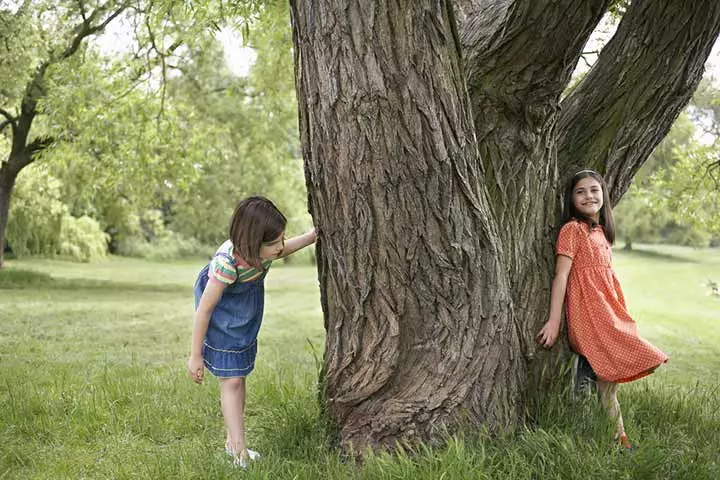
It is a quirky twist to the classic hide-and-seek game played on a playground, in which all the participants have to search for the person in hiding. The person who catches the hiding person will have to hide with the person, and the others will have to search for the hidden participants. The game continues until there is no more space left for hiding all the participants together. Such sport activities are useful in teaching cooperation, collaboration, and teamwork.
27. Ball pass in pool
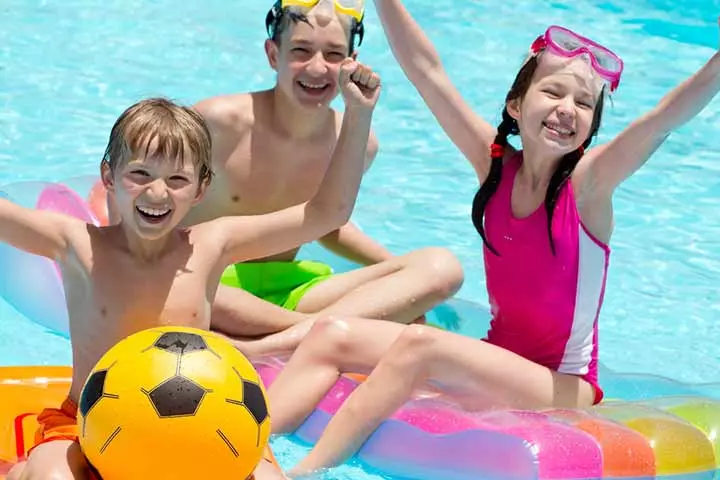
In this swimming pool game, children swim with a plastic ball to pass it to another participant. The game helps develop strength, tone muscles, and promote balance and coordination. The challenge is to swim and hold the ball without letting it drift away. This fun pool game can be a great family activity.
28. Bulls-eye toss
Stick various balloons on a standard dartboard and let your child burst them all by throwing a dart at a time. Make the game challenging by asking the child to stand at least seven feet away from the dartboard. Fix a time limit and instruct them to blast x number of balloons to call it a win. Involve family and friends to make it cheerful and exciting activity.
29. Mapmaking
Instruct the child to survey and study a mall, school, or park and then make a map on a plain sheet of paper. The child can include key features or landmarks of the place, such as a fountain in a park or a scenic view on a nature walk. This activity helps boost spatial awareness, memory, and improves creativity. It can also teach the child about paying attention to essential details of a location, especially when exploring the great outdoors on camping, hiking, or rock climbing trips.
30. Outdoor gardening
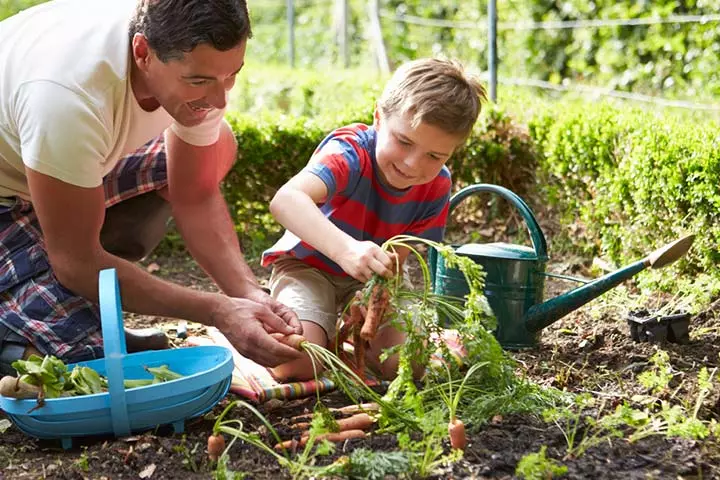
Gardening is an interactive outdoor activity for nature-loving children. Involve your eight-year-old child in planting and tending plants to learn about nature and its processes. Working with gardening tools, knowing about soil types, seeds, fertilizers, manures, etc. can also help children understand basic STEMiAn acronym concerning the fields of science, technology, engineering, and mathematics concepts. Besides, it serves as a recreational activity that teaches the child to be patient and compassionate towards other living beings.
Another fun outdoor activity is Sidewalk Chalk. Nicole adds, “Little and big kids (and grown-ups like me) love to color with sidewalk chalk. One of our favorite things to do is lay down and outline our entire body, then color it in. The kids make silly poses and we have a lot of fun.” Try it out with your kids and have a blast outdoors!
Frequently Asked Questions
1. Why is it important for eight-year-olds to do activities?
Children can jump, run, skip, and start exploring their muscle skills at around eight years. At the same time, they are growing mentally as they can comprehend dates, words, months, and the concept of space. Therefore, engaging them in educational activities and games may help aid these developments and take them in the right direction (7) (8).
2. How much activity should an eight-year-old get?
Eight-year-olds should get at least 60 minutes of physical activity a day. You may allow them to switch between aerobic, bone-strengthening, and muscle-strengthening activities. Altering between different types can help concentrate on various areas or body parts, including the muscles, bones, heart, and lungs (9).
3. How much screen time should 8-year-olds have each day?
Experts recommended that children between the ages of six and eight spend not more than 1 hour a day in front of a screen, except for homework (1).
4. How can parents ensure that the activities they choose for their 8-year-olds are age-appropriate?
While choosing age-appropriate activities for children, consider their cognitive, emotional, and physical abilities, as well as their interests and developmental stage. In addition, prioritize appropriate safety measures and provide proper supervision to avoid any mishaps.
5. How can parents involve their 8-year-olds in planning activities?
When you include children in the planning activities, they will feel more excited and engaged. You can encourage them to contribute ideas, suggestions, and preferences. Allow them to take ownership of their decisions, further promoting creativity, independence, and a sense of responsibility.
6. How can activities for 8-year-olds be adapted for children with disabilities?
Activities can be adapted to cater to children’s needs and abilities by providing additional support, incorporating sensory elements, or using specialized equipment. You can make these adjustments after consulting an expert or seeking resources and guidance from disability support groups that will assist you in creating inclusive experiences for children with disabilities.
7. What are the benefits of outdoor activities for my 8-year-old child?
Outdoor activities provide numerous benefits for 8-year-olds; they enhance their physical health, promote teamwork, and help develop social skills. Children can explore nature and connect with their environment, which fosters a sense of curiosity and appreciation for the world around them. Playing outside helps children develop advanced motor skills, lowers body mass, and contributes to better health by improving muscle strength, immune system, and mood.
Letter talks, drawing idioms, weather walls, captions and more, math riddles, and board games are some of the best educational and learning activities for 8-year olds. Learning activities help the child to learn the basics of the language, science, and mathematics in an engaging way. Puzzles, Pictionary, chess, and treasure hunts are also brain-boosting games for children. You may also encourage your kids to do crafts activities such as creating origami, cardboard creations, batik painting, or candle making. These creative activities can also boost your child’s cognitive development. However, always ensure adult supervision in craft activities involving knives, fire, or other instruments.
Infographic: Games And Activities For Eight-Year-Olds
From learning activities to fun outdoor and indoor games, our list contains all the exercises to ensure your child’s all-round development. So let your children stay both physically and mentally active by utilizing their cognitive abilities and having fun through some exciting and intriguing games.
Some thing wrong with infographic shortcode. please verify shortcode syntax
Illustration: Best Educational Games And Activities For 8-Year-Olds

Image: Dall·E/MomJunction Design Team
Personal Experience: Source
MomJunction articles include first-hand experiences to provide you with better insights through real-life narratives. Here are the sources of personal accounts referenced in this article.
i. 30 simple spring outdoor activities for kids;https://www.momalwaysfindsout.com/outdoor-activities-for-kids/
ii. Cooking with kids is Important (BLOG);
https://www.innichkachef.com/post/cooking-with-kids-is-important-blog
References
- Positive Parenting Tips: Middle Childhood (6–8 years old); CDC
- Playful Learning; Durham University
- What are idioms?; Cambridge University Press
- Welliam Hamer and Ledy Nur Lel; Using Pictionary Game To Increase Learner’s Vocabulary Mastery In English Language Instructions; Semantic Scholar
- Five Things Children Gain from Puzzle Play; University of Illinois
- Yoga Activity Card; CDC
- The Growing Child: School-Age (6 to 12 Years); Stanford Medicine
- How Kids Develop (Ages and Stages of Youth Development); Iowa State University
- Physical Activity for Children: An Overview; CDC
- Probing Question: Does talking to plants help them grow?, Penn State University
- Should kids play Wordle?; The Harvard Gazette
- The Benefits of Math Activities Depend on the Skills Children Bring to the Table; University of Pittsburgh
- The Benefits of Board Games; Manhattan Psychology Group
- The Importance of Arts and Crafts for Early Childhood Development; Children’s Museum of Sonoma County
- Gardening With Kids: How It Affects Your Child’s Brain, Body and Soul; PBS Kids
- Teaching Kids to Cook; Academy of Nutrition and Dietetics
- Using Homemade Obstacle Courses to Make Physical Activity Fun; Agriculture and Natural Resources, University of California
- Farhad Kazemi et al., (2012), Investigation the impact of chess play on developing meta-cognitive ability and math problem-solving power of students at different levels of education; Procedia – Social and Behavioral Sciences
Community Experiences
Join the conversation and become a part of our nurturing community! Share your stories, experiences, and insights to connect with fellow parents.
Read full bio of Dr. Maymunah Yusuf Kadiri
Read full bio of Nisha Bharatan
Read full bio of Harshita Makvana
Read full bio of Trisha Chakraborty







